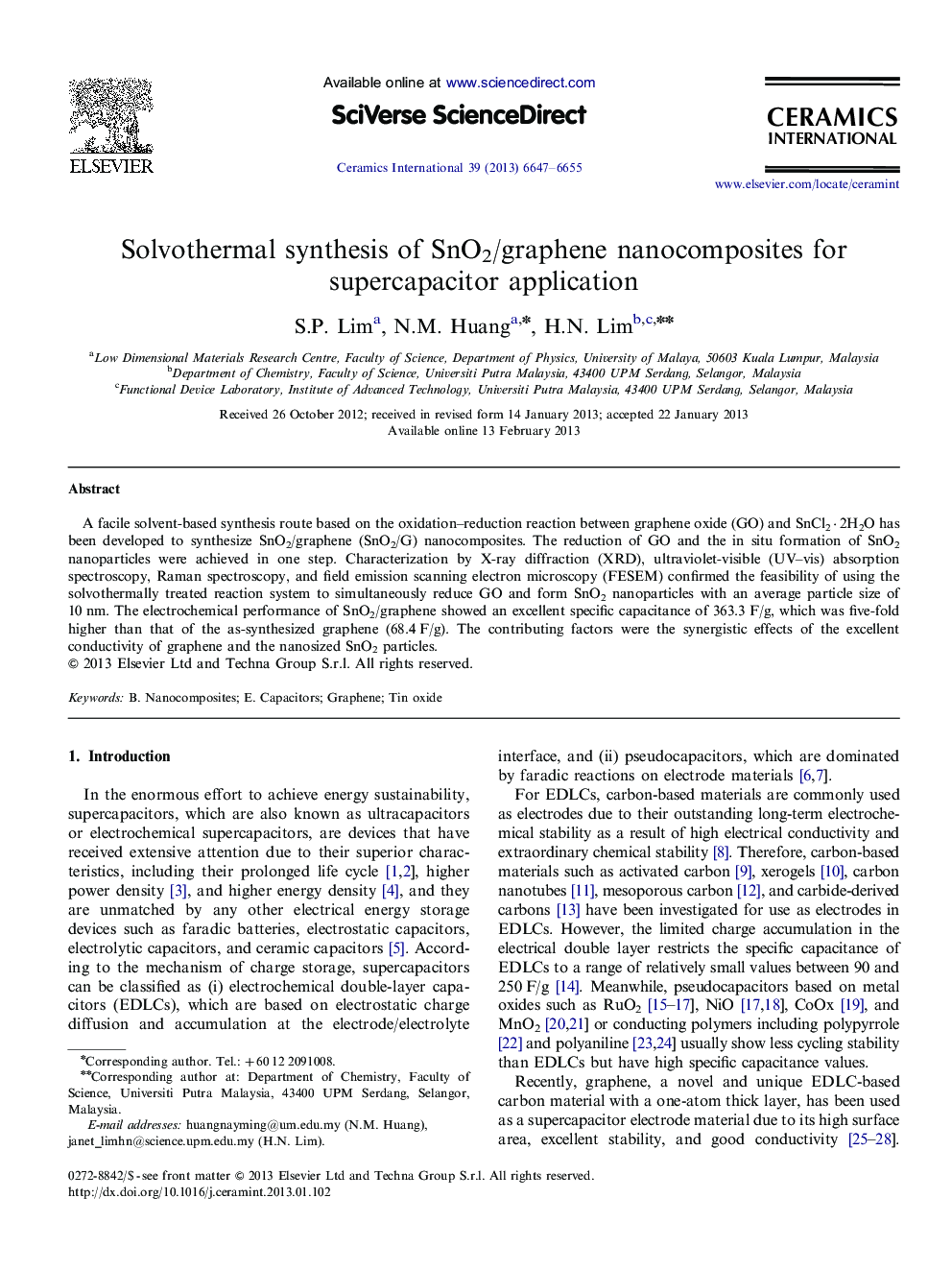| Article ID | Journal | Published Year | Pages | File Type |
|---|---|---|---|---|
| 1462798 | Ceramics International | 2013 | 9 Pages |
A facile solvent-based synthesis route based on the oxidation–reduction reaction between graphene oxide (GO) and SnCl2·2H2O has been developed to synthesize SnO2/graphene (SnO2/G) nanocomposites. The reduction of GO and the in situ formation of SnO2 nanoparticles were achieved in one step. Characterization by X-ray diffraction (XRD), ultraviolet-visible (UV–vis) absorption spectroscopy, Raman spectroscopy, and field emission scanning electron microscopy (FESEM) confirmed the feasibility of using the solvothermally treated reaction system to simultaneously reduce GO and form SnO2 nanoparticles with an average particle size of 10 nm. The electrochemical performance of SnO2/graphene showed an excellent specific capacitance of 363.3 F/g, which was five-fold higher than that of the as-synthesized graphene (68.4 F/g). The contributing factors were the synergistic effects of the excellent conductivity of graphene and the nanosized SnO2 particles.
